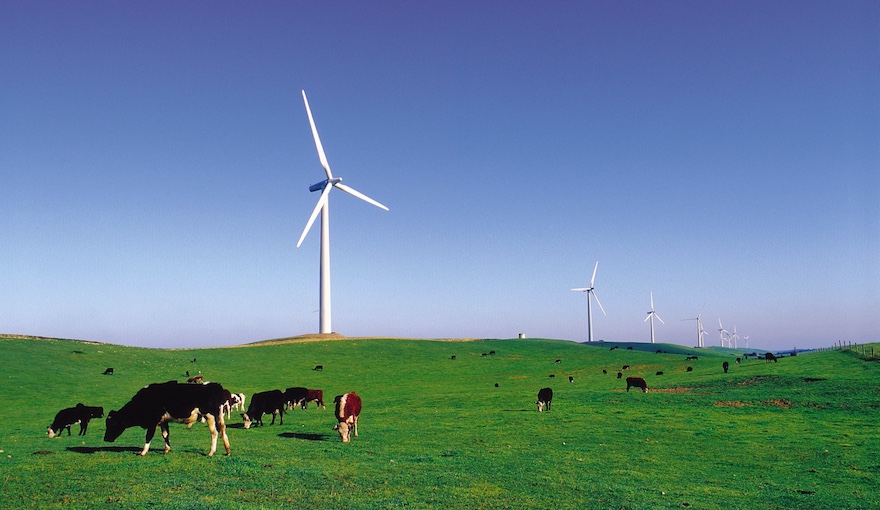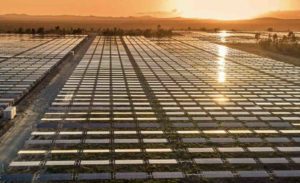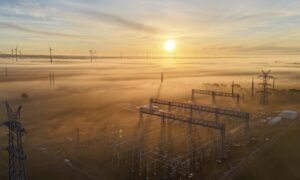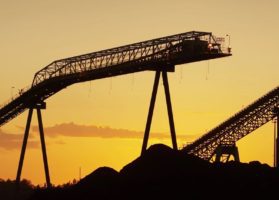Renewable energy company Pacific Blue says it will not be burying old turbines from the soon-to-be closed Codrington wind farm in nearby sand dunes, despite claims in anti-wind circles to the contrary.
The strong rebuttal of the sand dune theory comes as the company finalises plans for what will be part of the first wave of wind farm recycling in Australia.
Codrington, the first wind farm in Victoria and now the oldest “commercial” wind project in the country’s main grid, is scheduled to close in 2027 after deciding that it was not financially viable to replace the 26-year-old turbines with bigger machines.
The “sand dune” theory has been doing the rounds of social media and the anti-wind power circuit, and follows similarly wild claims made about old turbine blades in north Queensland.
“Pacific Blue has not discussed burial of turbine materials in sand dunes with any stakeholder,” the company said in a statement emailed to Renew Economy.
“This is not an option that the company would consider, nor propose, as this hypothetical would fail to meet social expectations, environmental regulations and be completely contrary to Pacific Blue’s values.”
One of the sources of the sand dune rumour appears to be an open letter to the Moyne Shire council in January from a member of the anti-wind group Wind Farm Living.
The Codrington wind farm will be one of the first big wind farms to be decommissioned once reaching the end of its life because the cost of repowering the site is too high to be financially viable.
There are 31 wind farms containing 599 turbines in Australia which were more than 15 years old in 2023. Codrington is in the vanguard of the older projects and that means fending off unsourced rumours, such as the sand dune theory, but also creating a practical template for how to handle decommissioning and recycling.
It’s an area that is not entirely unregulated: New South Wales (NSW) is leading state policy with its 2023 wind energy guidelines, which says recycling the whole turbine must be a priority for project owners.
In western Victoria, where the Codrington wind farm still operates, Moyne Shire council CEO Mark Eversteyn says decommissioning is the responsibility of operator Pacific Blue, but the company must act in line with the state’s Planning and Environment Act and their permit conditions.
Developers are required to submit a decommissioning plan as part of their planning permit.
Recycling is the area that state governments can really lean into, says Clean Energy Council policy director Nick Aberle.
“What we’re seeing is governments and communities who are keen for a clear answer about end of life options for renewable energy projects,” he told Renew Economy.
“This is a space where state governments can be really useful and I think they’re leaning into it, in the context of circular economies where they’re looking at waste streams.
“There’s a lot of good opportunities in the next five to 10 years before we get to the [big first] wave of wind farms and solar farms being decommissioned, to address a lot of those current unknowns.”
Current unknowns include whether end markets will be established enough to handle the volumes of material, from metals to blades, coming available from wind farms in the next two decades.
Sneakers and roads
About 85 to 95 per cent of a wind turbine is recyclable thanks to well-established techniques in steel and concrete reprocessing.
The problem is the last five to 15 per cent of the turbine mass, or the composite materials used to make blades for which recycling techniques are in their infancy.
Most of the innovations for turbine blades are emerging from Europe. These include repurposing the materials by cutting up or melting, via a thermal or chemical process, blades to be used in place of steel girders for bridges, electricity poles, or as other construction materials.
Spanish renewable energy infrastructure company Acciona Energía is looking at ways to recycle wind turbine blades in Australia. Last year it teamed up with a Spanish designer to produce sneakers made from turbine blades.
What we should take away from the range of turbine recycling trials underway around the world is not whether they become sustainable solutions, but the fact that so many ideas are being tested, Aberle says.
“We do keep seeing more and more examples of new uses and new end products for recycled materials coming up. Over the weekend I saw a trial in China where they’re taking wind turbine blades and doing mechanical processing of them, and putting that into road bases,” he says.
“They built a freeway with it. It’s been operating for five months, and there’s been no signs of wear and tear.”
Mistruths and conspiracies
Wind energy has been a target for misinformation for more than a decade, with some rumours requiring years of research to debunk and others able to be put to bed with a single phone call.
In 2023, Renew Economy debunked a story by Menzies Research Centre senior fellow Nick Cater that decommissioned wind turbine blades were secretly dumped in a shallow grave in a forest in far north Queensland.
A phone call to the landowner, local Ravenshoe business Kidner Contracting, uncovered that the turbine blades from the 12MW Wind Hill project were actually being stored there instead of being sent to the tip.
Other claims are less easy to resolve. A decade of studies were required to comprehensively conclude that low frequency sound from turbine blades do not affect sleep nor is it harmful to health – although the noise might be more annoying at night.
Many anti-renewable energy campaigns are bankrolled by conservative think tanks, including the Menzies Research Centre, which are attracting funding from some of Australia’s wealthiest individuals.
But in positive news for renewable energy developers and operators, more information about wind farm proposals can be a good counter to those campaigns – provided rumours about a particular project haven’t started to swirl.
A German-Australian study from 2022 published in Nature Energy found that opposition to wind farms in particular is strongly linked to beliefs in conspiracy theories.
“The relationship between wind farm opposition and conspiracy beliefs was many times greater than its relationship with age, gender, education and political orientation,” the study found.
But provided a rumour hasn’t already started, more information helps to bring people around to a project even among people who generally believe in other conspiracy theories, the study found.
Support for wind farms tends to be shaped “by people’s sense of equity, integrity-based trust, justice and fairness”, concepts that are now front of mind for developers and project owners that are seeking to win and keep their social licence to operate.








